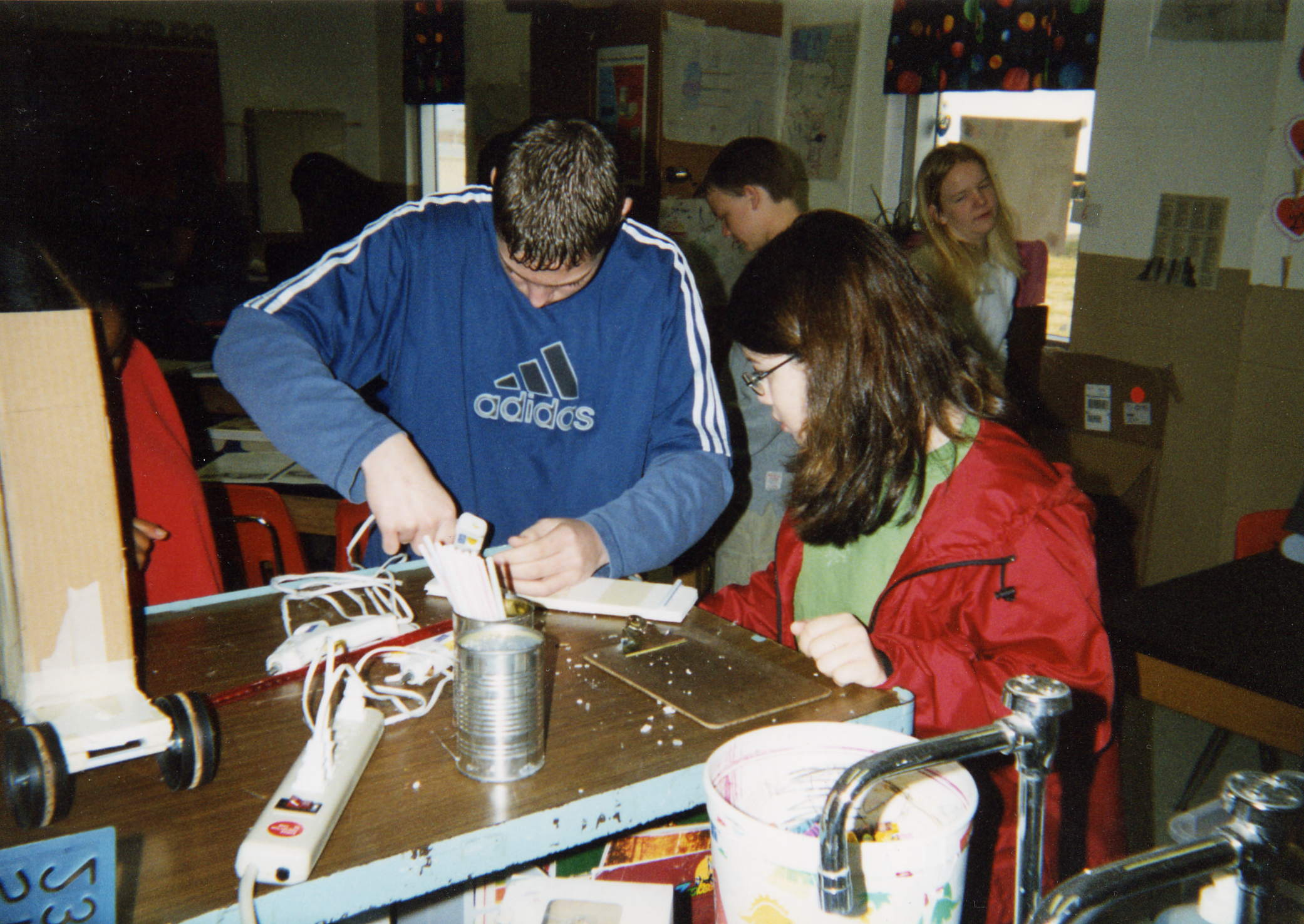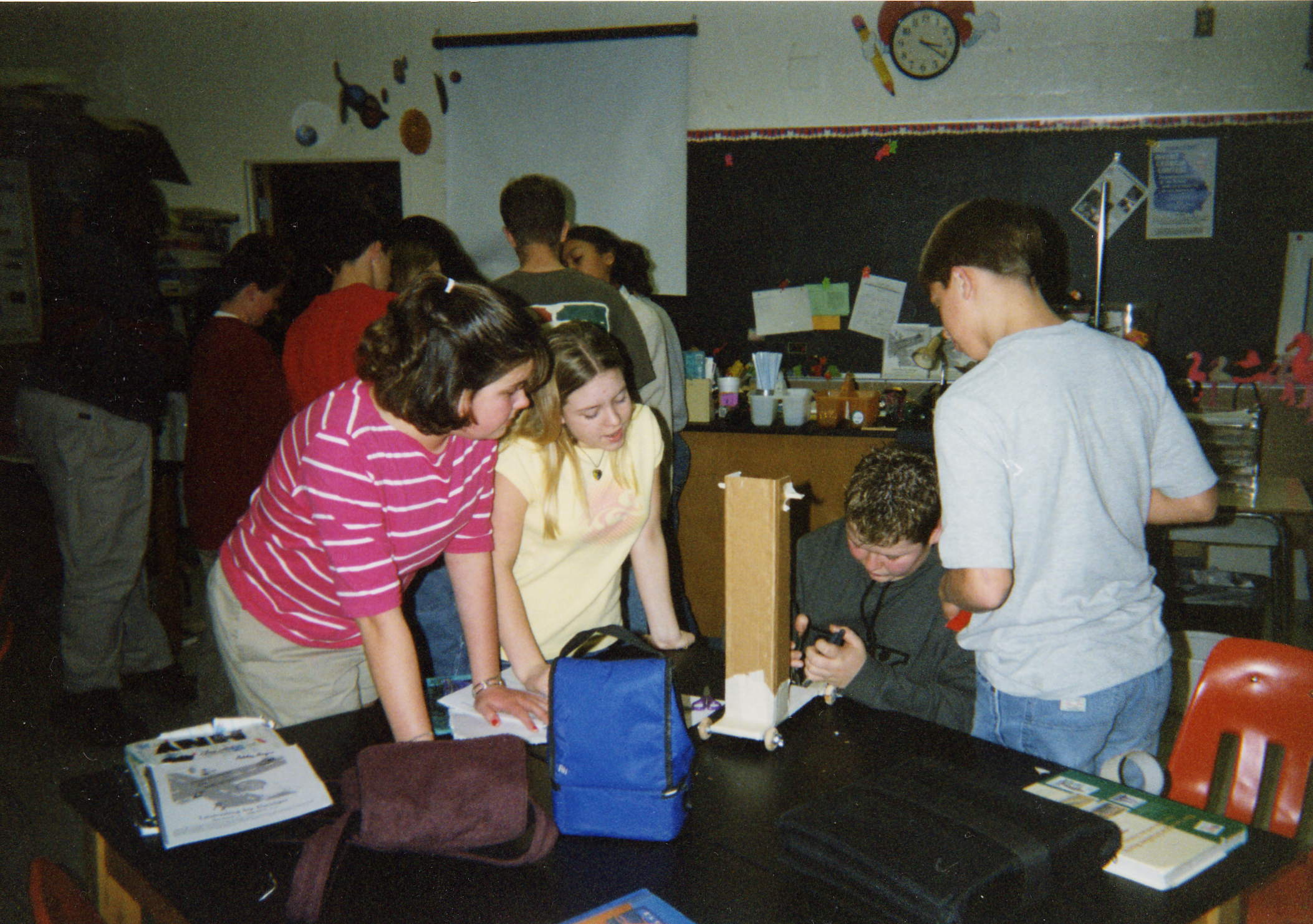 Students also notice that most of the cars don't go very far, and they wonder why. Some student in the class almost always begins to talk about friction, and the teacher uses that as an opportunity to introduce the terminology and what it means to the whole class. They learn that friction is a force, and that it is a force is negative and in the direction opposite to the direction something is moving - it is a force that slows things down. They read pages about friction to learn more about it. They discuss where there might be excess friction in their vehicles and how they can lessen it. They return to designing and testing with this goal in mind.
Students also notice that most of the cars don't go very far, and they wonder why. Some student in the class almost always begins to talk about friction, and the teacher uses that as an opportunity to introduce the terminology and what it means to the whole class. They learn that friction is a force, and that it is a force is negative and in the direction opposite to the direction something is moving - it is a force that slows things down. They read pages about friction to learn more about it. They discuss where there might be excess friction in their vehicles and how they can lessen it. They return to designing and testing with this goal in mind.
After refining and testing their designs to get some of the friction out, they hold another gallery walk, continuing the discussions of fair testing and friction afterwards. This time, all students should have tested their cars the same way, so it is possible to compare their performance, choose the best-performing one, and examine its design and construction to see how its designers lessened its friction. Having had considerable experience now with friction slowing movement and with finding and fixing sources of friction, students are ready to propose some simple design rules of thumb. A common one is "To make a vehicle go farther, find the sources of friction in its wheel-and-axle system and reduce the friction as much as possible." They might also writerules of thumb about identifying sources of friction, for example, "If you hear the wheels hitting on the chassis, reduce the friction by making the bearing longer so that it will keep the wheels away from the chassis."
 While students are working in small groups, the teacher makes her way around the classroom working with each group in turn. One might be having a problem with understanding about and running fair tests. Another might not be able to identify the sources of friction. Another might need help with construction. Another might be off task. She gives each group the help they need being careful not to provide answers, but rather to ask the kinds of questions and make the kinds of suggestions that cause students to figure out for themselves whatever it is they are having trouble with.
While students are working in small groups, the teacher makes her way around the classroom working with each group in turn. One might be having a problem with understanding about and running fair tests. Another might not be able to identify the sources of friction. Another might need help with construction. Another might be off task. She gives each group the help they need being careful not to provide answers, but rather to ask the kinds of questions and make the kinds of suggestions that cause students to figure out for themselves whatever it is they are having trouble with.
Students continue with one or more additional iterations, making their vehicles perform better each time. Each time they revisit and revise their rules of thumb and discuss sources of friction, how forces combine, and that less force will make an object move a smaller distance. They begin, as well, to try to explain the effect of force on distance, identifying that with less force, the car goes slower or begins to go slower earlier.
|

